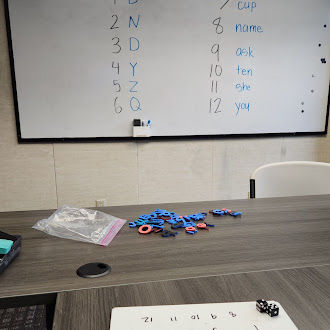Teaching Tip: Roll, Read, Erase – A Fun and Flexible Warm-Up for Literacy Learners
- ESLC
- Jun 11, 2025
- 2 min read
This simple activity is a favorite for literacy classrooms because it combines movement, numeracy, reading, and fun—all in a low-prep format. It’s a fantastic way to start class with energy and engagement, especially for adult learners building foundational literacy and numeracy skills.
Why We Love It:
Designed for literacy learners, this activity supports number recognition, basic reading, and classroom participation.
It's quick to set up—no printing, cutting, or tech required.
It works great for individuals, pairs, or small groups.
It’s easy to adapt to multi-level classrooms.
Option 1: Lapboard Number Erase

Materials: Individual whiteboards, dry erase markers, dice
Instructions:
Students write the numbers 1–6 on their whiteboards.
In pairs or groups, they take turns rolling one die.
When a number is rolled, they say the number and erase it.
The first student to erase all six numbers wins!
To scale up, add a second die (now they’ll erase 2–12) or ask students to write the number word before erasing.
Modification: This can be turned into a cooperative activity where the whole group is working to erase all the numbers. They could compete as a group against other groups or you can remove the competition from this activity altogether, depending on the class!
Option 2: Large Group Read and Erase

Materials: Large whiteboard (or poster), pictures or short text labeled 1–6, dice
Instructions:
Write or post items on the board, each labeled with a number (e.g., images, vocabulary words, or short sentences).
A student rolls the die, reads or identifies the item for that number, and erases or crosses it off.
Students race to erase all six items.
Make it multi-level:
Use simpler images or CVC words for beginners; use short sentences for more advanced learners.
Switch from erasing to rewriting the item for added writing practice.
Ask students to write their own example sentence with the word or idea before removing it.
Bonus Tips for Literacy Success:
Keep visual supports available, especially for beginning readers.
Repeat key vocabulary out loud to build word recognition.
Pair stronger readers with beginners to build confidence and peer learning.
Celebrate progress—winning isn’t the goal; participation and practice are!
This engaging warm-up is especially effective in literacy classrooms because it offers repetition, visual support, and hands-on interaction. It’s proof that learning the basics can still be collaborative and joyful!



Comments